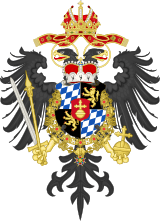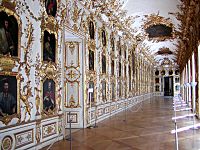Charles VII, Holy Roman Emperor facts for kids
Quick facts for kids Charles VII |
|
|---|---|
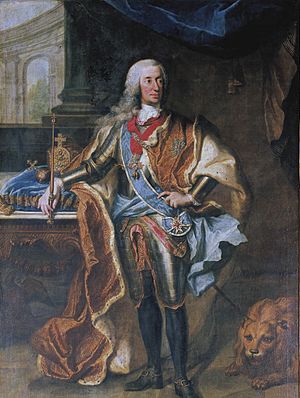
Portrait by Georg Desmarées
|
|
| Holy Roman Emperor | |
| Reign | 24 January 1742 – 20 January 1745 |
| Coronation | 12 February 1742, Frankfurt |
| Predecessor | Charles VI |
| Successor | Francis I and Maria Theresa |
| King of Bohemia | |
| Reign | 19 December 1741 – 12 May 1743 |
| Coronation | 19 December 1741, Prague |
| Predecessor | Maria Theresa |
| Successor | Maria Theresa |
| Elector of Bavaria | |
| Reign | 26 February 1726 – 20 January 1745 |
| Predecessor | Maximilian II Emanuel |
| Successor | Maximilian III Joseph |
| Born | 6 August 1697 Brussels, Netherlands |
| Died | 20 January 1745 (aged 47) Munich, Bavaria |
| Burial | Theatine Church, Munich |
| Spouse |
Maria Amalia of Austria
(m. 1722) |
| Issue | Maria Antonia, Electress of Saxony Theresa Benedicta Maximilian III Joseph, Elector of Bavaria Maria Anna Josepha, Margravine of Baden-Baden Maria Josepha, Holy Roman Empress |
| House | Wittelsbach |
| Father | Maximilian II Emanuel |
| Mother | Theresa Sobieska |
| Religion | Roman Catholicism |
Charles VII (born August 6, 1697 – died January 20, 1745) was an important ruler in Europe. He was the prince-elector of Bavaria starting in 1726. Later, he became the Holy Roman Emperor from 1742 until his death.
Charles was a member of the House of Wittelsbach, a powerful royal family. His time as emperor ended a long period where the Habsburg family had ruled. Even so, Charles was related to the Habsburgs through his family and marriage. After Emperor Charles VI died in 1740, Charles VII claimed the land of Austria. He did this because he was married to Maria Amalia of Austria, who was Charles VI's niece. For a short time, from 1741 to 1743, he was also King of Bohemia. In 1742, he was chosen to be the Holy Roman Emperor, ruling for three years.
Contents
Early Life and Rise to Power

Charles Albert was born in Brussels. His parents were Maximilian II Emanuel, Elector of Bavaria, and Theresa Kunegunda Sobieska. His mother was the daughter of King John III Sobieski of Poland.
His family faced many challenges during the War of the Spanish Succession. This was a big war over who would rule Spain. Because of the war, Charles spent several years under house arrest in Austria. This meant he was kept in his home and could not leave freely. His family had moved back to Munich in 1701. His father, Maximilian Emanuel, had to leave after a battle in 1704. Charles and his brothers and sisters stayed with their mother, who was acting as the ruler.
In 1705, Austrian officials forced his mother into exile, and she could not return to Bavaria for ten years. His father also went into exile. The family finally reunited in 1715. After he turned 18, Charles traveled through Italy from 1715 to 1716. In 1717, he fought in the Austro-Turkish War with Bavarian soldiers.
On October 5, 1722, Charles married Maria Amalia of Austria. She was the youngest daughter of the late Emperor Joseph I. Bavaria gave up its claims to the throne through this marriage. However, it allowed Charles to claim some Austrian lands later on.
In 1725, Charles visited the Palace of Versailles in France. He met the French court there and made important connections.
In 1726, Charles became the Duke of Bavaria after his father died. This made him one of the prince-electors of the Holy Roman Empire. Prince-electors were powerful nobles who chose the emperor. He also inherited a large debt of 26 million guilders, which was a type of money. He kept good relationships with both his Habsburg relatives and France.
In 1729, he created the Order of St George. He also started building the Rothenberg Fortress.
Becoming Holy Roman Emperor
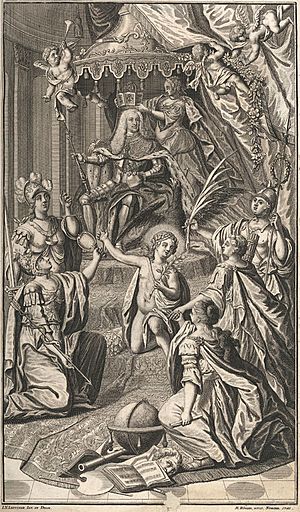

Charles wanted to gain even more power, following his father's goals. He was the son-in-law of Joseph I, Holy Roman Emperor. Because of this, Charles did not accept the Pragmatic Sanction of 1713. This was a rule that said Maria Theresa would inherit all Habsburg lands. After Emperor Charles VI died in 1740, Charles VII claimed the German lands of the Habsburg family.
In July 1741, Charles made an agreement called the Treaty of Nymphenburg. He joined forces with France and Spain against Austria. This led to the War of the Austrian Succession.
During this war, Charles's army entered Austria in 1741. He had planned to take Vienna, the capital. But his French allies went to Bohemia instead. They captured Prague in November 1741. This meant Charles was crowned King of Bohemia in Prague on December 19, 1741.
On January 24, 1742, Charles was chosen as "King of the Romans." This was a step before becoming emperor. He officially became Holy Roman Emperor on February 12, 1742. His brother, Klemens August of Bavaria, was an archbishop and elector. He usually supported Austria, but he voted for Charles. He even crowned Charles emperor in Frankfurt. George II of Great Britain, who was also an elector, voted for Charles. This was despite Britain and Hanover being allies with Austria in the war. Charles VII was the second emperor from the House of Wittelsbach family.
Soon after his coronation, Austrian forces took over most of Charles's lands. Bavaria was occupied by Maria Theresa's troops. The emperor had to leave Munich and lived in Frankfurt for almost three years. Most of Bohemia was lost in December 1742. Charles was often made fun of because he did not control his own lands or the empire. The role of Holy Roman Emperor had become mostly symbolic by then. A popular saying about him was et Caesar et nihil, meaning "both Emperor and nothing."
Charles VII tried to show his power from Frankfurt. He passed several laws, like giving special rights to the University of Erlangen in 1743. He also created new nobles.
The new commander of the Bavarian army, Friedrich Heinrich von Seckendorff, fought Austria in 1743 and 1744. In 1743, his troops took Bavaria, and Charles returned to Munich for a short time. But he lost Bavaria again when the French had to retreat. A new campaign by Frederick II of Prussia helped force the Austrian army out of Bavaria. In October 1744, Charles got Munich back and returned. He tried to make peace with Austria but also asked France for more military help.
Charles suffered badly from gout, a painful joint condition. He died at Nymphenburg Palace in January 1745. His son, Maximilian III Joseph, made peace with Austria. With the Treaty of Füssen, Austria agreed that Charles's election as emperor was valid.
He was buried in the crypt of the Theatinerkirche in Munich. His heart was buried separately. The composer Georg Philipp Telemann wrote music for his funeral. King Frederick the Great wrote in 1746, "This death robbed me of the emperor, who was my friend."
Cultural Legacy
Charles VII's rule was a high point for the Bavarian Rococo art style. The Nymphenburg Palace was finished during his time. A large circular area around the palace, with fancy Baroque houses, was meant to be a new city. But this plan was never completed. Charles VII lived in Nymphenburg, and it became a favorite summer home for future Bavarian rulers.
Charles also oversaw the building of the Ancestral Gallery and the Ornate Rooms at the Munich Residenz. In 1731, he bought the Palais Porcia. He had it rebuilt in the Rococo style in 1736 for one of his friends, Countess Topor-Morawitzka. He also asked his main architect, François de Cuvilliés, to build the Palais Holnstein. This was for another friend, Sophie Caroline von Ingenheim, between 1733 and 1737. Cuvilliés also built the Amalienburg for Charles and his wife. This was a fancy hunting lodge built in the Rococo style from 1734 to 1739. It is located in the Nymphenburg Palace Park.
Many talented artists worked for the royal family during Charles's reign. These included architects, sculptors, and painters from Italy, France, and Germany. Some famous names were Agostino Barelli, Dominique Girard, François de Cuvilliés, and the Asam brothers, Cosmas Damian Asam and Egid Quirin Asam.
Children
Charles and his wife, Archduchess Maria Amalia of Austria, had seven children:
| Name | Portrait | Birth | Death | Notes |
|---|---|---|---|---|
| Maximiliane Maria Princess of Bavaria |
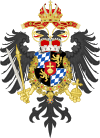 |
1723 | Died as a baby. | |
| Maria Antonia Walpurgis Electress of Saxony |
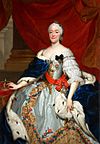 |
July 18, 1724 | April 23, 1780 | Married Frederick Christian of Saxony in 1747. They had children. |
| Theresa Benedicta Princess of Bavaria |
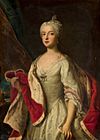 |
December 6, 1725 | March 29, 1743 | Died young and never married. |
| Maximilian III Joseph Elector of Bavaria |
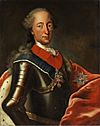 |
March 28, 1727 | December 30, 1777 | Married Maria Anna Sophia of Saxony in 1747. They had no children. |
| Joseph Ludwig Leo Prince of Bavaria |
 |
August 25, 1728 | December 2, 1733 | Died as a child. |
| Maria Anna Josepha Margravine of Baden-Baden |
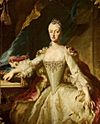 |
August 7, 1734 | May 7, 1776 | Married Louis George, Margrave of Baden-Baden in 1755. They had no children. |
| Maria Josepha Holy Roman Empress |
 |
March 30, 1739 | May 28, 1767 | Married Joseph, King of the Romans in 1765. They had no children. |
Other Children
Charles Albert also had a son with Sophie Caroline von Ingelheim:
- Franz Ludwig, Count of Holnstein (1723–1780). He married Anna Marie zu Löwenfeld and had children.
Titles
Charles VII held many important titles, including: Charles VII, by the grace of God elected Holy Roman Emperor, forever August, King in Germany and of Bohemia, Duke in the Upper and Lower Bavaria as well as the Upper Palatinate, Count-Palatine of the Rhine, Archduke of Austria, Prince-Elector of the Holy Roman Empire, Landgrave of Leuchtenberg, etc. etc.
See also
 In Spanish: Carlos VII del Sacro Imperio Romano Germánico para niños
In Spanish: Carlos VII del Sacro Imperio Romano Germánico para niños


